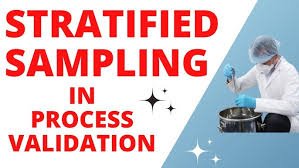Procedure for Sampling in Process Validation

📋 Procedure for Sampling in Process Validation
1. Preparation Stage
-
Review the approved Process Validation Protocol for sampling details (points, number of samples, method).
-
Ensure that sampling tools and containers are clean, calibrated, and labeled.
-
Train personnel involved in sampling to avoid cross-contamination and errors.
2. Identification of Sampling Points
-
Define critical process stages where variability can impact product quality.
-
Typical sampling stages include:
-
Raw materials and intermediates
-
Blend uniformity (beginning, middle, end of batch)
-
Granulation (wet & dry samples)
-
Compression / encapsulation (in-process checks at intervals)
-
Coating samples at different stages
-
Final product sampling
-
3. Sampling Methodology
-
Use statistically justified sampling plans (e.g., stratified random sampling).
-
Follow specific SOPs for each dosage form (solid, liquid, semisolid, parenteral).
-
Collect samples in triplicate where required (e.g., content uniformity, blend uniformity).
-
Ensure that sampling does not affect the integrity of the batch.
4. Sample Handling and Labeling
-
Transfer samples into clean, labeled containers (with batch number, date, stage, sampler’s initials).
-
Protect samples from light, moisture, and contamination.
-
Maintain chain of custody for traceability.
5. Documentation
-
Record sampling activity in Batch Manufacturing Record (BMR) or validation logbook.
-
Include details such as:
-
Sampling date and time
-
Process stage
-
Equipment used
-
Quantity sampled
-
Sample location/point
-
Personnel signature
-
6. Testing and Analysis
-
Send samples to QC for analysis as per the validation protocol (e.g., assay, dissolution, uniformity, microbiological tests).
-
Compare results with acceptance criteria defined in the protocol.
7. Review and Reporting
-
Compile test results and sampling records in the Process Validation Report.
-
Investigate deviations or OOS results, if any.
-
Conclude whether the process is capable of consistently producing quality product.
✅ Key Principles
-
Sampling must be representative of the batch.
-
Must follow Good Manufacturing Practices (GMP).
-
Should be scientifically justified and documented.
🎓 Discover one of the best Pharmaceutical Quality Assurance course available —click below to explore the course that’s shaping future Quality Assurance skills.
https://trcjw.on-app.in/app/oc/306166/trcjw

